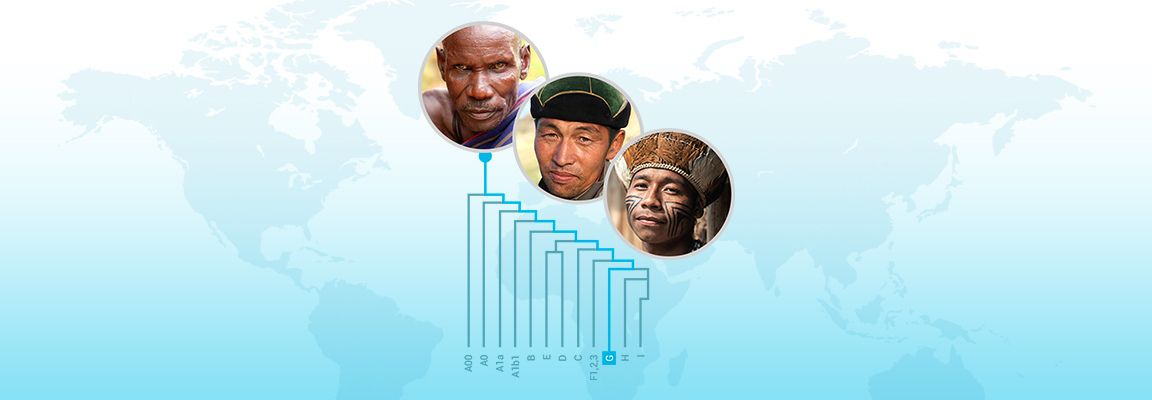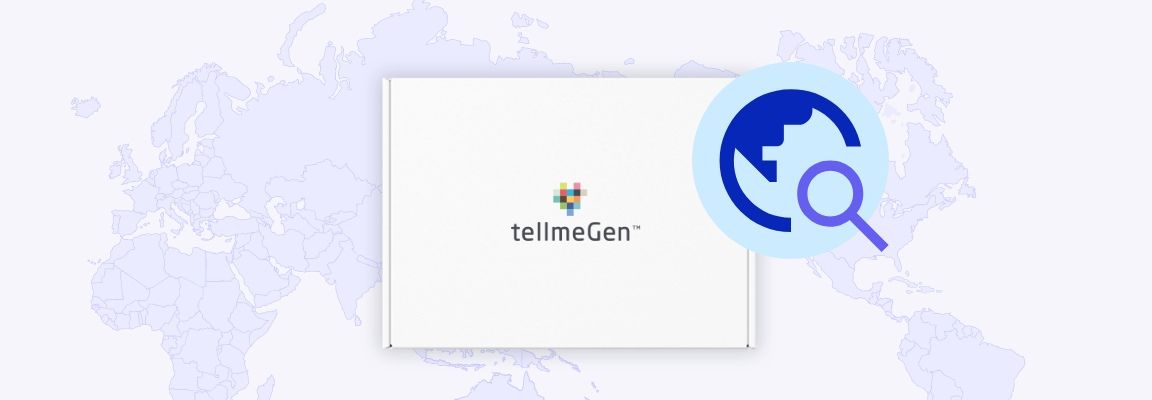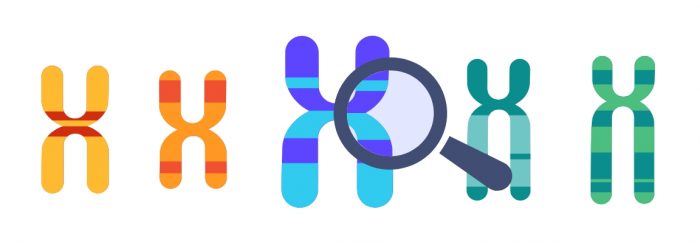Until recently, studies about our ancestors only focused on our common grandmother, that is, our first female ancestor to create our maternal lineage, known as “mitochondrial Eve”. But there was no data or evidence about the origin of our common grandfather, so in recent years we have proceeded to determine when and how he appeared.
Origins of our paternal lineage
Recently, several studies have detailed that the first male ancestor emerged about 120,000 years ago. That is, if every male in the world were to take DNA tests to trace their paternal line back through all previous generations, they would eventually converge on a single common grandfather known as “chromosomal Adam”.
So, based on the origins of both ancestors and today’s technologies, the latest studies have concluded that the female (mitochondrial Eva) and male (chromosomal Adam) are only 80,000 years apart, being mitochondrial Eva the first to arrive.
Now we can learn anyone’s genetic journey, although previously it was possible to know the maternal lineage.
It was from these published studies that the dispersion and evolution of the human population around the world was analyzed. Thus, a genealogical map was created at the male level to know the main lines that were formed from chromosomal Adam.

Paternal haplogroups reveal the expansion of the human being
A family tree contains branches that represent the links between individuals who share genetic profiles, leading to a common ancestor.
Today, human beings are present in a large part of the entire planet Earth, but this was not always the case. Its origin dates back to Africa and, little by little, it began to occupy and expand around the world. In turn, different variants of this genetic material emerged generation after generation, known as haplogroups.
What characterizes each haplogroup? We share with you some curious information about some of them:
- Haplogroup A (Africa, from 140 to 90 000 years ago): hunter-gatherer men. As a curiosity we emphasize that, to this day, many of the men belonging to this haplogroup are still dedicated to it.
- Haplogroup BT (Africa, from 85 to 60,000 years ago): first division of the population at the genetic level of the Y chromosome. These two branches are the ones that marked the African and non-African lineages that were formed later.
- Haplogroup CF (Out of Africa, from 75 to 60 000 years ago): the population split. Some took coastal routes, while another part headed westward to Asia. This can be seen in the divergence of the haplogroups on the maps.
- Haplogroup F (Out of Africa, from 62 to 57 000 years ago): this lineage is the original of most non-African branches, representing a wave of migration away from the continent of origin.
- Haplogroup K (Eurasia and South Asia, from 50 to 40 000 years ago): it is the original of lineages present mainly in Oceania and Eurasia.
- Haplogroup R (Eastern Eurasia, from 30 to 20 000 years ago): lineage most represented in Europe. We can differentiate between R1a and R1b, dominant in Eastern Europe and Western Europe respectively.
- Haplogroup D: typical of the Far East, present in Tibet, Japan archipelago and the Andaman Islands. This group is believed to come from the coastal migration, mentioned above. Do you know who are Emperor Higashiyama and Minamoto no Yoritomo? They belong to this haplogroup.
- Haplogroup E: characteristic of the African continent, although in less frequency it is also found in the Mediterranean area and the Near East. Nelson Mandela, Ramses III, Napoleon Bonaparte, Barack Obama, Albert Einstein or Zinedine Zidane belong to this group.
- Haplogroup G: haplogroup descending from GHIJK, found mainly in the Caucasian population, and in some areas of the Middle East and the Mediterranean. Do you know who is the oldest human mummy so far? His name is Ötzi, and his haplogroup was identified as G.
- Haplogroup I: it is the fifth most present group in the European population or of European origin. Bill Clinton, Warren Buffet, Jimmy Carter, Novak Djokovic, Bill Gates, Chuck Norris or Stephen King are part of this haplogroup.
- Haplogroup J: this haplogroup comes from the Middle East, although it also stands out in the Middle East and in populations of southern Europe. Adam Sandler, along with Ben Affeck and Bernie Sanders belong to this haplogroup.
- Haplogroup R1a: it is the most common in Eastern Europe, South and Central Asia, and its origin dates back to the time of the last glacier in Eurasia. Nikola Tesla, David Hume, William-Alexander of Holland or Tom Hanks are from this haplogroup.
- Haplogroup R1b: predominates in Western Europe, apart from some areas of Russia and Central Africa. Have you ever heard the names of the scientists Charles Darwin, Thomas Alva Edison, Abraham Lincoln, James D. Watson? And of the actors Kevin Costner and Robert Downey Jr? They all belong to haplogroup R1b.
This representation would indicate the origin of the expansion of the population, and, therefore, the first haplogroups present during those years. But it should be noted that many more descendant lineages to these main branches have been emerging.
I want to know my paternal lineage, what do I have to do?
The paternal lineage is characterized by the study of specific areas of the Y chromosome, which is inherited from parents to children with virtually no genetic modifications, i.e. this chromosome is passed on to the following generations without significant alterations. This means that, in a family, the great-grandparent, grandparent, child, grandchild and great-grandchild will have the same genetic information on this chromosome.
From the tellmeGen ancestry DNA test we create a personalized map of the paternal lineage which will allow us to determine the family relationship between males, since females do not have this Y chromosome.
However, in case you are a female and want to know your paternal lineage, you obviously have it too, but not in your genes. So you will need a male member of your family (brother, father, uncle, grandfather, etc.) to know it.
This service is already available in tellmeGen DNA tests, so all you have to do is follow one of the following procedures:
- If you have already purchased a tellmeGen test, in one of the next uploads and result updates you will receive in your email, we will notify you that this new information is already available and you will be able to consult it completely free of charge.
- If you have not yet purchased your tellmeGen genetic test, now is the time to join our family! Purchase your DNA test now and get information about your paternal haplogroup, as well as more than 440 characteristics about you that we offer along with free result updates.



